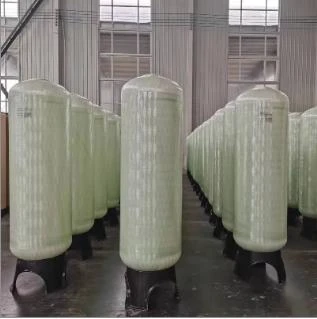loading...
- No. 9, Xingyuan South Street, Dongwaihuan Road, Zaoqiang County, Hengshui, Hebei, China
- admin@zjcomposites.com
- +86 15097380338
- Welcome to visit our website!
frp profiles
Understanding FRP Profiles A Comprehensive Overview
Fiber Reinforced Polymer (FRP) profiles have emerged as a revolutionary material in construction and engineering, thanks to their unique properties and versatile applications. Comprising a polymer matrix reinforced with fibrous materials such as glass, carbon, or aramid fibers, FRP profiles are known for their high strength-to-weight ratio, corrosion resistance, and durability. This article delves into the features, benefits, and applications of FRP profiles, demonstrating why they are gaining traction across various industries.
Properties of FRP Profiles
One of the most notable attributes of FRP profiles is their exceptional strength-to-weight ratio. This characteristic makes them an ideal choice in scenarios where weight is a critical factor, such as in aerospace, automotive, and construction applications. Unlike traditional materials like steel and concrete, FRP profiles can achieve comparable strength while weighing significantly less, leading to reduced transportation and installation costs.
Moreover, FRP profiles demonstrate excellent corrosion resistance. They are impervious to moisture, chemicals, and UV degradation, making them suitable for use in harsh environments such as marine structures, chemical processing plants, and wastewater treatment facilities. This inherent durability allows for longer service life and lower maintenance requirements, ultimately leading to cost savings over the lifespan of a project.
Benefits of Using FRP Profiles
The benefits of FRP profiles can be summarized into several key advantages
1. Lightweight and Versatile The lightweight nature of FRP profiles facilitates easy handling and installation. They can be molded into various shapes and sizes, providing designers and engineers with greater flexibility in construction.
2. Corrosion Resistance Unlike metals that can rust or degrade over time, FRP profiles remain unaffected by moisture, chemicals, and extreme environmental conditions, ensuring lasting performance.
frp profiles

3. Low Thermal Conductivity FRP profiles offer excellent thermal insulation properties, reducing energy costs in heating and cooling applications.
4. Design Freedom The versatility of FRP allows for innovative architectural designs. They can be manufactured in a range of colors and textures, helping to achieve aesthetic goals without sacrificing functionality.
5. Sustainability Many FRP materials are recyclable, and their durability contributes to sustainability goals by minimizing the need for frequent replacements.
Applications of FRP Profiles
The applications of FRP profiles are as varied as their benefits. In the construction sector, they are used for beams, columns, and reinforcements, particularly in structures exposed to moisture, such as bridges and marine docks. Their lightweight nature is beneficial in retrofitting existing structures, where heavy materials may pose an additional burden.
In the automotive industry, FRP profiles are utilized in manufacturing lightweight parts that enhance fuel efficiency without compromising safety. Similarly, in the aerospace industry, components made from FRP contribute to reducing overall aircraft weight, enhancing fuel efficiency and performance.
Additionally, FRP profiles find applications in the electrical and telecommunications sectors. They are used for pole and tower constructions due to their excellent dielectric properties, ensuring reliable performance in electrical installations.
Conclusion
In summary, FRP profiles represent a significant advancement in material science with their unique combination of strength, lightweight, corrosion resistance, and design flexibility. As industries continue to innovate and seek more efficient and sustainable solutions, the prevalence of FRP profiles is likely to increase. Their ability to meet modern engineering challenges positions them as a vital component in the future of construction, manufacturing, and beyond. As we embrace these materials, it's crucial for engineers and designers to understand their properties and attributes to maximize their potential in various applications.
-
The Rise of FRP Profiles: Strong, Lightweight, and Built to LastNewsJul.14,2025
-
SMC Panel Tanks: A Modern Water Storage Solution for All EnvironmentsNewsJul.14,2025
-
GRP Grating: A Modern Solution for Safe and Durable Access SystemsNewsJul.14,2025
-
Galvanized Steel Water Tanks: Durable, Reliable, and Ready for UseNewsJul.14,2025
-
FRP Mini Mesh Grating: The Safer, Smarter Flooring SolutionNewsJul.14,2025
-
Exploring FRP Vessels: Durable Solutions for Modern Fluid HandlingNewsJul.14,2025
-
GRP Structures: The Future of Lightweight, High-Performance EngineeringNewsJun.20,2025
